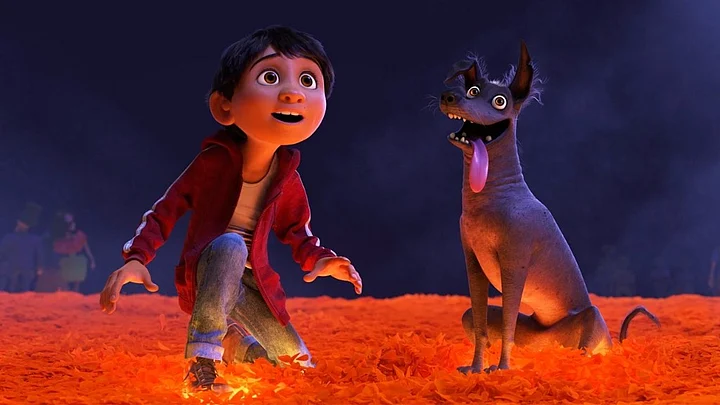Coco, Pixar’s new film is about death. Does that sound too depressing? Hold your heart, this is not a trip down the rabbit hole, but a ballad that connects death to the idea of memory. In Pixar’s able hands, everything shines even when afterlife is evoked before our disbelieving eyes.
Is it another Pixar great? The answer is a resounding no. It might not be a marked frontbencher like Inside Out, but it’s no merchandised backbencher either. It’s made with exuberance and ingenuity, and it knows how to sing to its viewers. It is a film that holds the promise that the animation giant still has the vigour to go for greatness. Since Disney’s takeover of Pixar in 2006, the once-upon-a-time studio that churned out inventive originality without stopping for breath, settled for franchises and market lore. But Coco tells us, there is hope.
In the fictional Mexican village of Santa Cecilia, we meet Miguel Rivera (Anthony Gonzalez), a12-year-old boy who harbours the secret wish of becoming a musician, just like his idol Ernesto de la Cruz (Benjamin Bratt). Why secret? A magnificently illuminated prologue tells us music is forbidden in his family, owing to the fact that Miguel’s great-great-grandfather, a wandering guitarist and singer, left his great-great-grandmother to pursue his destiny. Miguel keeps his fantasy of music hush-hush but his family’s shoe-making vocation looms large on his fate.
Things take an inexplicable turn during Day of the Dead festival when the little boy, unbeknownst to him, transports himself to the land of the dead. He meets his dead family members, and later, befriends a charlatan named Hector (Gael García Bernal), who can’t secure a pass (a clever jibe at the immigration system) to the other side.
Can Miguel go back and make his dream of music come true? As Pixar’s genius goes, the land of dead is a sight to behold. This is when the film comes truly alive with animation so incredible, it courts your eyes with all bright, glowing hues of orange, green, blue, and yellow. If there’s a bridge made of sparkling marigold petals, there are parties, trams, and structures that leap out of the screen like the reverie of a Mexican dance number.
Despite having dead folks and skeletons at their disposal, Lee Unkrich and his co-director and co-writer Adrian Molina build an innovative world, not with morbidity but with humour that carries a driving sense of sunniness. Skeletons talk, operate, dance and sing in cheerful abandon.
The narrative may have the ring of a familiar adventure story, but it has breezy enough surprises to take us along (there is a brilliant gag on the afterlife having no loo). But the core idea of the film, that of death, not due to the perishable body but of the memory, is served with passionate might.
It forces us to reassess our fear of death by bringing in a bigger fear of being forgotten by our loved ones. And it does it all with illustrative resourcefulness and a whistling compassion. There is death, there is murder, but you never stop beaming.
In his quest to become like his hero, Miguel summons Ratatouille’s Remy and Spirited Away’s Chihiro, learning lessons that will go a long way. A morbid idea swoons in joy and mournful tenderness, and a fountain empties itself in our eyes.
There, there.
(The writer is a journalist, a screenwriter, and a content developer who believes in the insanity of words, in print or otherwise. He tweets @RanjibMazumder)
(At The Quint, we question everything. Play an active role in shaping our journalism by becoming a member today.)
